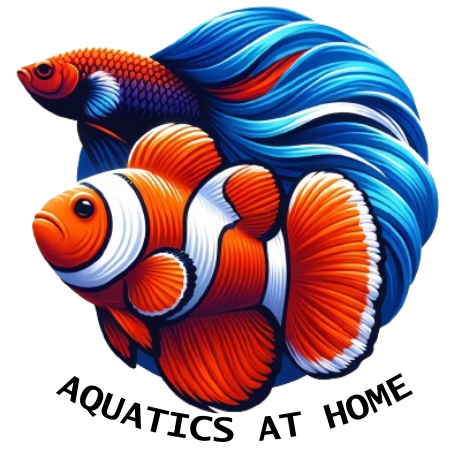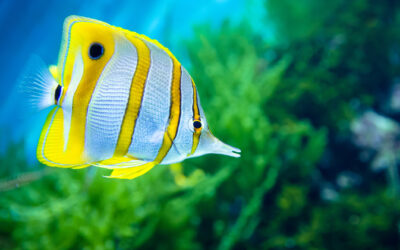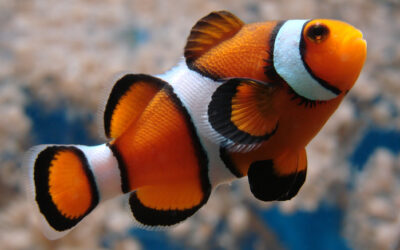What is needed to care for basslets in a marine aquarium?
Basslets require specific tank conditions, a particular diet, and compatible tank mates. Each species has unique requirements regarding color patterns, distinguishing features, and social behavior.
Embarking on the Colorful Journey of Basslets
Basslets are a vibrant group of marine fish that add a dash of color and movement to any aquarium. They come in a myriad of hues, from the radiant purples of the Royal Gramma to the fiery reds of the Swissguard Basslet. These fish are small in size, but their bright colors and dynamic behavior make them a standout feature in any marine aquarium.
These fish not only bring visual appeal but also exhibit interesting behaviors that make them a joy to observe. They dart around the tank with quick movements, display territorial tendencies, and interact with other species in fascinating ways. The beauty of this fish truly lies in their striking colors and captivating behaviors.
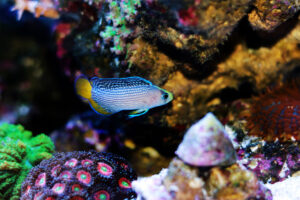
Adding Basslets in your Marine Aquarium
Adding these little swimmers to a marine aquarium brings more than just a splash of color. They play a significant role in providing balance and diversity. Basslets are generally peaceful and can coexist with a variety of other marine species, making them an excellent addition to a community tank.
Furthermore, basslets have a low bioload and do not require a large tank, making them suitable for hobbyists with limited space. They are also hardy and adapt well to captive environments, further underscoring their relevance in a marine aquarium.
A Glimpse into the Guide’s Contents
This guide delves into the uniqueness of various basslet species, focusing on their colors, patterns, and distinguishing features. The guide also touches on creating the ideal habitat and providing the right diet for these vibrant creatures.
Beyond the basics of care, the guide explores social and behavioral traits. It offers insights into their compatibility with other fish and the challenges associated with their care. The wealth of knowledge in this guide aims to equip hobbyists with everything they need to successfully keep basslets in their marine aquariums.
Different Species – an Overview
A Look at the Royal Gramma’s Unique Appeal
The Royal Gramma, with its striking coloration of vibrant purple and bright yellow, is a jewel of the marine aquarium. It is small, hardy, and relatively easy to care for, making it an ideal choice for both novice and experienced aquarists. This fish stands out for its peaceful nature and ability to get along with a variety of tank mates.
Their natural habitat is a rocky reef, where they can often be seen darting in and out of crevices. They bring a similar dynamic energy to home aquariums. The Royal Gramma’s unique appeal lies in its vivid colors, active behavior, and compatibility with other marine species.

The Charming Swissguard Basslet: A Detailed View
The Swissguard Basslet is a charming addition to any marine aquarium. It boasts a fiery red body adorned with alternating black and white stripes, making it a visually stunning species. This fish is known for its shy demeanor and preference for hiding spots.
Despite its reclusive nature, the Swissguard Basslet displays interesting behavior when it does venture out. It is a hardy fish that can adapt to a variety of tank conditions, making it an excellent choice for those looking to add a pop of color and some intrigue to their marine aquarium.
Distinguishing Features of the Purple Firefish
The Purple Firefish is another popular species that brings a unique aesthetic to marine aquariums. It is characterized by its elongated body, vibrant purple hue, and fiery red tail. This fish is peaceful and well-suited to community tanks, but it can be a bit timid and may require plenty of hiding places.
Purple Firefish are known to be jumpers, so a well-sealed tank is a must to keep them safe. Their stunning colors, peaceful nature, and interesting behaviors make them a fascinating addition to any marine aquarium.
Other Noteworthy Species Worth Exploring
Beyond the Royal Gramma, Swissguard, and Purple Firefish, there are many other species worth exploring. The Lantern Basslet, Harlequin Bass, and Blackcap Basslet are just a few examples that bring unique colors, patterns, and behaviors to an aquarium.
Each species offers something different, and part of the joy of keeping these fish is discovering their unique traits and behaviors. With a bit of research and planning, aquarists can find the perfect species to add a dash of color and interest to their marine aquarium.
Creating the Ideal Habitat: Tank Conditions and Environments
Tank Conditions
Basslets thrive in well-maintained tank conditions that mimic their natural habitats. They prefer warmer water temperatures, typically between 72 and 78 degrees Fahrenheit. A pH range of 8.1-8.4 is ideal, and the specific gravity should be between 1.020 and 1.025, which is common for most marine environments.
You need good filtration to keep the water clean and free of toxins. Regular water changes are also an absolute must if you want to maintain optimal water parameters. With the right tank conditions, these fish can exhibit their full range of colors and behaviors, making them a joy to observe.
Importance of Environmental Factors in Basslet Care
Environmental factors play a key role in the health and well-being of these wonderful fish. These fish typically inhabit rocky reefs in the wild and prefer environments with plenty of hiding spots. Providing caves, crevices, and overhangs can help mimic their natural environment and make them feel secure.
Lighting is another critical aspect of basslet care. While these fish can adapt to a range of lighting conditions, moderate lighting that simulates a reef environment is ideal. The right environment not only enhances the well-being of basslets but also brings out their vibrant colors and dynamic behaviors.
Designing the Perfect Marine Aquarium for Basslets
Designing the perfect marine aquarium for basslets requires careful planning and consideration. Start by choosing a suitable tank. While these fish are small and do not require a lot of space, they appreciate room to swim and explore. A 20 to 30-gallon tank is typically sufficient for a single basslet.
Include plenty of live rock to create hiding spots and territories. The substrate should be fine to medium grain, which allows them to dig and burrow. Also, ensure that the tank is well-sealed, as some fish, like the Purple Firefish, are known to be jumpers. With a well-designed aquarium, basslets can thrive and bring a vibrant, dynamic presence to your marine setup.
Catering to Dietary Needs
Basics of a Healthy Basslet Diet
Basslets are predominantly carnivorous and thrive on a diet rich in protein. Their natural diet includes small crustaceans, marine worms, and other tiny invertebrates. In an aquarium setting, they readily accept a variety of prepared foods, including flakes, pellets, and frozen or freeze-dried options.
When choosing food for basslets, it’s important to ensure that it is of high quality and suitable for marine fish. The food should be small enough to fit in the basslet’s mouth. Feeding them a balanced diet helps maintain their vibrant colors and promotes overall health.
Importance of Variety in Basslet Nutrition
While basslets can survive on a basic diet, incorporating a variety of foods is key to their well-being. A diverse diet helps meet their nutritional needs, enhances their colors, and stimulates their natural feeding behaviors. It also reduces the risk of nutritional deficiencies and related health issues.
Try incorporating a mix of flakes, pellets, and frozen foods into their diet. Live foods, such as brine shrimp or copepods, can also be offered occasionally to add variety and enrichment. Remember to feed in small quantities to avoid overfeeding and to maintain water quality.
Tips for Feeding Your Basslets
Feeding basslets is not just about what to feed but also how and when to feed. Basslets are active feeders and usually prefer to eat small meals several times a day. It’s best to feed them in the morning and evening, replicating their feeding patterns in the wild.
Sinkable pellets or frozen foods are a good choice, as basslets tend to feed at different levels of the tank. Always observe your basslets during feeding. If they are not consuming the food, this could indicate overfeeding or a potential health issue. Regular and mindful feeding is an integral part of basslet care.
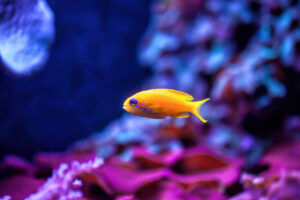
Understanding the Social and Behavioral Traits of Basslets
Unveiling the Social Nature of Basslets
Basslets exhibit a range of social behaviors that make them fascinating to observe. While some species are solitary or territorial, others form loose groups or pairs. They often display dominance hierarchies, with larger individuals asserting control over smaller ones.
Many basslets are also known for their interesting behaviors, such as hovering in a head-down position or retreating into rocks and crevices when threatened. Understanding the social nature of basslets can help in providing them with a suitable environment and compatible tank mates.
Compatibility of Basslets with Other Fish
Most basslets are peaceful and can coexist with a variety of other marine species. They can be housed with other small, non-aggressive fish and invertebrates. However, it’s crucial to monitor their interactions, as some basslets can become territorial, especially in smaller tanks.
While basslets generally get along with other species, they may not tolerate their own kind unless the tank is large enough to establish territories. Always research the specific requirements and compatibility of the basslet species you wish to add to your aquarium to ensure a harmonious community.
Behavioral Traits Unique to Basslets
Basslets display a host of unique behavioral traits that contribute to their appeal. They are active swimmers and spend much of their time darting around the tank, exploring their surroundings, and searching for food. Many basslets also exhibit intriguing behaviors like burrowing in the substrate or hiding in crevices.
Some basslet species, like the Royal Gramma, have a fascinating habit of retreating backward into hiding spots when threatened. Observing these behaviors provides insight into their well-being and helps aquarists ensure that their tank environment supports the natural behaviors of basslets.
Overcoming Challenges in Basslet Care
Common Difficulties Beginners Face
While basslets are generally hardy and adaptable, beginners may encounter some challenges in their care. One common difficulty is providing the right diet. Basslets require a variety of high-quality foods to meet their nutritional needs, and finding the right balance can be tricky.
Another challenge is creating a suitable habitat. Basslets require plenty of hiding spots and room to swim, and they can be sensitive to water conditions. Providing a suitable environment requires careful planning and regular maintenance.
Practical Solutions to Basslet Care Challenges
Overcoming care challenges requires patience, research, and a willingness to learn. If feeding is a difficulty, try offering a variety of foods to find what your basslets prefer. It may take some trial and error to figure out the best feeding regimen for your specific fish.
When it comes to habitat, invest in a quality filtration system and perform regular water changes to keep conditions optimal. Provide plenty of hiding spots with live rock and ensure the tank has ample space for swimming. With time and effort, most care challenges can be successfully overcome.
Tips for Successful Basslet Care
Successful basslet care boils down to understanding their needs and providing a suitable environment. Regular monitoring is vital to catch any potential issues early. Pay attention to your basslets’ behaviors, as changes can often indicate a problem.
Joining a community of basslet enthusiasts or a local aquarium club can also be hugely beneficial. They can provide valuable advice, support, and insights from their own experiences. With the right care, basslets can thrive in your aquarium and provide endless enjoyment with their vibrant colors and dynamic behaviors.
Expanding Your Knowledge: Additional Resources
Recommended Readings for Basslet Enthusiasts
There are numerous resources available for those looking to expand their knowledge of basslets. Books like “Marine Aquarium Handbook: Beginner to Breeder” by Martin A. Moe Jr. and “The Conscientious Marine Aquarist” by Robert M. Fenner offer comprehensive guides on marine aquarium care, including sections on basslets.
Online resources also offer a wealth of information. Websites like Saltwater Aquarium and Live Aquaria provide detailed species profiles, care guides, and expert advice. Regularly reading these resources can help deepen your understanding and appreciation for these fascinating creatures.
Useful Tools for Basslet Care
Properly caring for basslets requires some essential tools. A high-quality aquarium filter is crucial to maintain water quality, while a heater ensures the correct temperature. Test kits for pH, ammonia, nitrate, and nitrite levels also help monitor water conditions and prevent issues before they become serious.
Digital thermometers, feeding tools, and aquarium vacuums also come in handy. Moreover, apps like AquaPlanner and Aquarimate can help with scheduling maintenance tasks, tracking water parameters, and logging feeding times. These tools can make basslet care more manageable and efficient.
Communities for Basslet Hobbyists
Joining a community of marine aquarium hobbyists can be immensely beneficial. Forums like Reef2Reef, Nano-Reef, and Aquatic Community have dedicated sections for basslet care where members share their experiences, troubleshoot problems, and offer advice.
Local aquarium clubs also provide opportunities to meet like-minded enthusiasts, exchange ideas, and learn from experienced hobbyists. Being part of a community not only supports your learning journey but also enhances the enjoyment of the hobby.
Encouragement and Support for Basslet Hobbyists
Motivation for Persisting in Basslet Care
While caring for basslets can present some challenges, the rewards are well worth it. Persisting in basslet care contributes to your personal growth, patience, and problem-solving skills. Every challenge overcome is a step towards becoming a more skilled and confident aquarist.
Seeing your fish thrive in the environment you’ve created for them brings immense satisfaction. The vibrant colors and fascinating behaviors of basslets add a unique dynamic to your aquarium, turning it into a captivating display of marine life.
The Rewarding Experience of Basslet Keeping
Keeping basslets is a rewarding experience that extends beyond the visual appeal. It’s about the connection you form with these creatures, the knowledge you gain about their behaviors and needs, and the pride you feel in providing them with a healthy, enriched life.
Moreover, these fish are a window into the diverse world of marine life, raising awareness about their natural habitats and the importance of conservation. They make great companions, adding vibrancy and life to your space. The joy they bring to your day-to-day life is priceless.
Reassurance for Beginners: Basslet Care is Achievable
If you’re a beginner, it’s important to remember that everyone starts somewhere. While the initial stages of basslet care may seem daunting, with time, patience, and dedication, you will gain the skills and confidence needed to succeed.
Utilize the wealth of resources available, seek advice from experienced hobbyists, and learn from your own experiences. Basslet care is not just achievable but also immensely rewarding. You’re embarking on a journey that will bring you joy, knowledge, and a deeper appreciation for the wonders of marine life.
Reflecting on the Vibrant World of Basslets
Looking Back at Our Journey
As we delve into the vibrant world of basslets, it’s clear that these captivating creatures have much to offer. From understanding their dietary needs and behavioral traits to overcoming care challenges, we’ve explored various aspects of care for this fish.
This journey is not just about mastering the technical aspects. It’s also about appreciating the beauty and diversity of marine life, fostering a sense of responsibility, and deriving satisfaction from creating a thriving environment for your basslets.
The Future of Your Marine Aquarium with Basslets
With the knowledge and skills you’ve gained, the future of your marine aquarium looks promising. Basslets add a dynamic element to your tank, their vibrant colors and intriguing behaviors creating a captivating display.
As you continue to care for your fish, you’ll witness their growth, observe new behaviors, and deepen your bond with these fascinating creatures. The future holds exciting opportunities for expansion, learning, and enjoyment in your basslet-keeping journey.
Encouragement for Continual Learning
Remember, the learning journey doesn’t end here. There’s always more to discover about the intriguing world of basslets. Keep exploring, stay curious, and continually strive to provide the best possible care!.
Whether you’re a beginner or an experienced hobbyist, every day brings opportunities for growth and learning. Embrace the challenges, celebrate the successes, and cherish the rewarding experience of being a part of the vibrant world of fishkeeping.
Key Terminology for Basslet Care
Significance of Understanding Key Terms
Understanding key terms can be super helpful for any hobbyist. It can help you better comprehend the information provided in care guides, forums, and other resources. Moreover, it allows you to communicate effectively with fellow enthusiasts and experts. This glossary aims to enhance your understanding and make the process of caring for your newest swimmers more accessible and enjoyable.
Glossary of Key Terms
Ammonia: A toxic waste product produced by fish and other organisms in the aquarium. High levels can be harmful or fatal to fish.
Aquarium Cycling: The process of establishing beneficial bacteria in a new aquarium that can convert harmful waste products into less harmful substances.
Basslet: A group of small, vibrantly colored marine fish popular in the aquarium trade.
Brine Shrimp: Small aquatic crustaceans are often used as food in aquariums.
Carnivorous: An animal that primarily eats other animals.
Community Tank: An aquarium housing multiple species of fish that are compatible in terms of size, temperament, and environmental needs.
Filter (Aquarium): A device used to remove waste and potentially harmful by-products from aquarium water.
Live Rock: A piece of coral reef rock that’s used in marine aquariums. It provides a natural habitat for marine organisms and aids in water filtration.
Marine Aquarium: An aquarium that houses marine (saltwater) organisms.
Nitrates: The final product of the nitrogen cycle in an aquarium, less toxic than ammonia or nitrites but still harmful in large amounts.
Nitrites: A toxic by-product of the nitrogen cycle, produced by the breakdown of ammonia.
PH: A measure of how acidic or alkaline the water is.
Protein Skimmer: A device used in marine aquariums to remove organic compounds, including protein and amino acids, by using the process of foam fractionation.
Quarantine Tank: A separate aquarium set up to isolate new or sick fish to prevent the spread of diseases.
Reef Safe: A term used to describe fish or invertebrates that are generally safe to keep in a reef aquarium and won’t harm corals.
Salinity: The amount of salt dissolved in the water.
Water Parameters: The various chemical and physical properties of aquarium water that need to be monitored and adjusted for the health of the fish, such as pH, salinity, temperature, ammonia, nitrites, and nitrates.

About the Author
With decades of experience, James shares his extensive knowledge in aquatics through this website, covering a broad series of topics related to the pond and aquarium hobby. Aiming to guide both beginners and experienced hobbyists alike, his goal is to help educate aquatic enthusiasts for the long-term betterment of the hobby as well as the environment. Learn More >>
Exploring Butterflyfish Species for Marine Aquarium Enthusiasts
Disclaimer: This blog shares my personal experiences, research, and insights as an aquatics hobbyist. While I strive to provide accurate information, please consult a professional or your local fish store for tailored advice on your specific tank setup. Remember,...
The Six Line Wrasse: A Comprehensive Guide to Care and Keeping
Disclaimer: This blog shares my personal experiences, research, and insights as an aquatics hobbyist. While I strive to provide accurate information, please consult a professional or your local fish store for tailored advice on your specific tank setup. Remember,...
The Essential Clownfish Care Guide
Disclaimer: This blog shares my personal experiences, research, and insights as an aquatics hobbyist. While I strive to provide accurate information, please consult a professional or your local fish store for tailored advice on your specific tank setup. Remember,...
